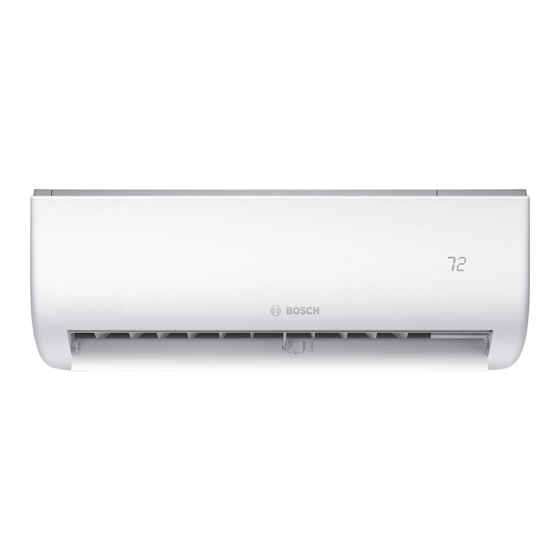
Table of Contents
Advertisement
Advertisement
Table of Contents
Troubleshooting

Summarization of Contents
Safety Instructions
1.1 Precautions
General safety guidelines and warnings for handling the unit.
1.1.1 Emergency cases
Procedures to follow in case of unit malfunction or accidents.
1.1.2 Pre-Installation and Installation
Safety precautions during the unit's installation and setup.
1.2 Service works
Safety guidelines for performing maintenance and repair tasks.
1.2.4 Checking for leakage
Methods and precautions for detecting refrigerant leaks.
1.2.14 Leak detection methods
Acceptable methods for detecting refrigerant leaks.
1.2.15 Removal and evacuation
Procedures for removing and evacuating refrigerant.
1.2.16 Charging procedures
Guidelines for safely charging refrigerant into the system.
Specifications
2.1 Model Reference
Table correlating indoor and outdoor unit models with capacity.
2.2 Electrical Wiring Diagrams
Diagrams illustrating the electrical connections of the unit.
2.2.1 Indoor unit
Wiring diagram for the indoor unit with abbreviation key.
2.2.2 Outdoor Unit
Wiring diagram for the outdoor unit with abbreviation key.
Product Features
3.1 Operation Modes and Functions
Overview of the unit's operational modes and features.
3.1.2 Safety Features
Protective mechanisms built into the unit's operation.
3.1.5 Cooling Mode
Description of the cooling mode operation and controls.
3.1.6 Heating Mode
Details on the heating mode operation and compressor control.
3.1.7 Auto-mode
Explanation of the automatic mode selection based on temperature.
3.1.11 Auto-Restart function
How the unit automatically restarts after a power interruption.
3.1.12 Refrigerant Leakage Detection
Feature description for detecting refrigerant leaks.
Maintenance and Disassembly
4.1 Maintenance
General maintenance procedures for the unit.
4.1.1 First Time Installation Check
Initial checks after installation to ensure proper operation.
4.1.2 Refrigerant Recharge
Steps for recharging the system with refrigerant.
4.1.3 Re-Installation
Procedures for re-installing the unit.
4.2 Disassembly
Procedures for taking the unit apart.
4.2.1 Indoor unit
Steps for disassembling the indoor unit components.
4.2.2 Outdoor unit
Steps for disassembling the outdoor unit components.
Troubleshooting
5.1 Safety Caution
Essential safety warnings before performing troubleshooting.
5.2 General Troubleshooting
Overview of common errors and their solutions.
5.2.1 Error Display (Indoor Unit)
Table of error codes and corresponding solutions for indoor units.
5.3 Error Diagnosis and Troubleshooting
Detailed diagnostic procedures for troubleshooting.
5.3.1 Remote maintenance
Troubleshooting steps for remote maintenance issues.
5.3.2 Field maintenance
Troubleshooting steps for field maintenance issues.
5.4 Quick Maintenance by Error Code
Quick guide to maintenance based on error codes.
5.5 Troubleshooting by Error Code
Detailed troubleshooting steps for specific error codes.
5.5.1 Common Check Procedures
General procedures for checking components like sensors and IPM.
5.5.2 - 5.5.13 Specific Error Code Diagnosis
Diagnosis and solutions for various error codes (E0-P4).
Appendix
6.1 Temperature Sensor Resistance Value Table for T1, T2, T3 and T4
Resistance values for temperature sensors at various temperatures.
6.2 Temperature Sensor Resistance Value Table for TP
Resistance values for the compressor discharge temperature sensor.
6.3 Pressure On Service Port (R32)
Pressure charts for R32 refrigerant in cooling and heating modes.
















Need help?
Do you have a question about the R32 and is the answer not in the manual?
Questions and answers